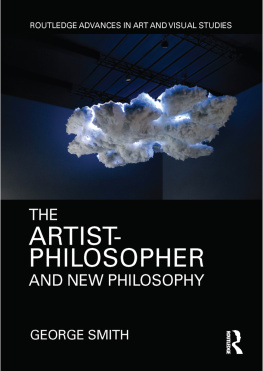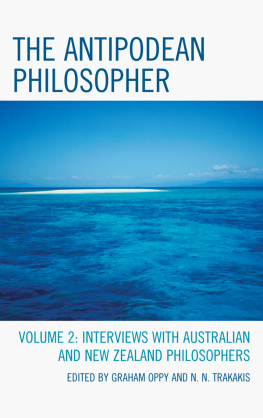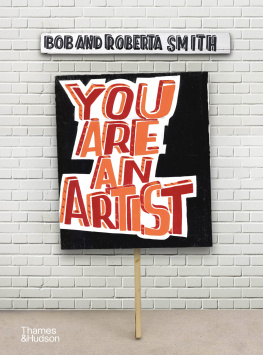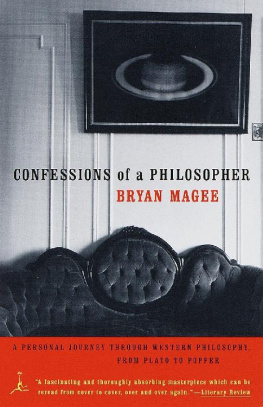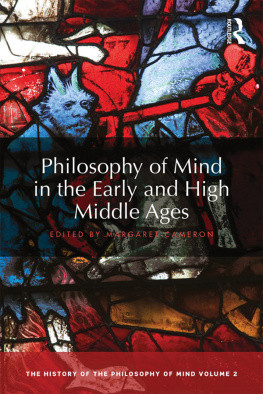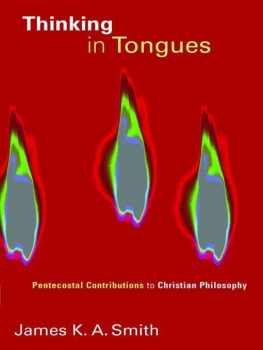
The Artist-Philosopher and New Philosophy
In The Artist-Philosopher and New Philosophy, Smith argues that Western Metaphysics has indeed come to what Heidegger describes as an end. That is hardly to say philosophy as such is over or soon to disappear; rather, its purpose as a medium of cultural change and as a generator of history has run its course. He thus calls for a New Philosophy, conceptualized by the artist-philosopher who makes or poeticizes New Philosophy, spanning literary and theoretical discourses and operating across art in all its forms and across culture in all its locations. To this end, Smith proposes the establishment of schools and social networks that advance the training and development of artist-philosophers, as well as global digital networks that are themselves designed toward this ever-becoming community.
George Smith is Founder, President and Professor of Philosophy and Visual Culture at the Institute for Doctoral Studies in the Visual Arts, USA.
Cover Image Caption: Alfredo Jaar
The Cloud, 2015
Installation with MDF, metal, wire, and polyester fibre 240 160 120 / 6 4 3 m
Installation view: Deichtorhallen, Hamburg
Photography: Henning Rogge
Courtesy Galerie Thomas Schulte, Berlin, Deichtorhallen, Hamburg and the artist, New York
Routledge Advances in Art and Visual Studies
This series is our home for innovative research in the fields of art and visual studies. It includes monographs and targeted edited collections that provide new insights into visual culture and art practice, theory, and research.
For a full list of titles in this series, please visit www.routledge.com/Routledge-Advancesin-Art-and-Visual-Studies/book-series/RAVS
Perception and Agency in Shared Spaces of Contemporary Art
Edited by Cristina Albu and Dawna Schuld
Contemporary British Ceramics and the Influence of Sculpture
Iconoclasm, Monument, and Multiples
Laura Gray
Contemporary Citizenship, Art, and Visual Culture
Making and Being Made
Edited by Corey Dzenko and Theresa Avila
The Evolution of the Image
Political Action and the Digital Self
Edited by Marco Bohr and Basia Sliwinska
Artistic Visions of the Anthropocene North
Edited by Gry Hedin and Ann-Sofie N. Gremaud
Contemporary Artists Working Outside the City
Creative Retreat
Sarah Lowndes
Design and Visual Culture from the Bauhaus to Contemporary Art
Optical Deconstructions
Edit Tth
Changing Representations of Nature and the City
The 1960s1970s and Their Legacies
Edited by Gabriel Gee and Alison Vogelaar
The Artist-Philosopher and New Philosophy
George Smith
First published 2018
by Routledge
711 Third Avenue, New York, NY 10017
and by Routledge
2 Park Square, Milton Park, Abingdon, Oxon OX14 4RN
Routledge is an imprint of the Taylor & Francis Group, an informa business
2018 Taylor & Francis
The right of George Smith to be identified as author of this work has been asserted by him in accordance with sections 77 and 78 of the Copyright, Designs and Patents Act 1988.
All rights reserved. No part of this book may be reprinted or reproduced or utilised in any form or by any electronic, mechanical, or other means, now known or hereafter invented, including photocopying and recording, or in any information storage or retrieval system, without permission in writing from the publishers.
Trademark notice: Product or corporate names may be trademarks or registered trademarks, and are used only for identification and explanation without intent to infringe.
Library of Congress Cataloging in Publication Data
A catalog record has been requested for this book
ISBN: 978-1-138-18648-4 (hbk)
ISBN: 978-1-315-64382-3 (ebk)
Typeset in Sabon
by Sunrise Setting Ltd, Brixham, UK
For Amy Curtis
Contents
Most of the questions taken up in this book first came to the fore in IDSVA seminars in Berlin, Paris, Istanbul, Athens, and at Spannocchia Castle in Tuscany. And so first among those to be acknowledged and thanked for the book that resulted are none other than my students. Not only did they good-naturedly endure my lectures, allowing me to wander down many an endless path, but they constantly peppered me with critically insightful questions and tough, hard-to-meet objections that enlivened the seminars and informed my thinking throughout the books writing.
Though longtime friend, colleague, and mentor David Driskell had no direct input on the book, his lifes work as an artist-philosopher lent unending inspiration to the project as a whole. John Rajchman is to be thanked for his ever-delightful friendship and steadfast support, and for his cautionary remarks regarding the relatively parochial dimensions of Western thought and the absolute necessity of situating the future of New Philosophy within the borderless intertextualities of todays world.
My dear friend Sylvre Lotringer epitomizes the artist-philosopher, and indeed it is from his example that I first began to picture the image of the philosopher as artist-philosopher. Moreover, he was tremendously helpful with the chapter on addiction, the most difficult of all the chapters to write. I am particularly grateful for his mention of Virilios take on technology as well as Baudrillards, both of which can be seen as variations on our Heideggerian theme as regards the pending extinction of man. While Lotringer provided insight and encouragement as regards the culture of addiction from a philosophical standpoint, the gifted neuroscientist and extraordinary thinker Ted Coons offered me invaluable advice on the neuroscience of addiction and invariably followed through with wise, patient instruction. My one friend and colleague who has written on neuroaesthetics, Paul Armstrong, was incredibly generous and helpful with his commentary on this chapter, too. He referred me to his very fine book on How Literature Plays with the Brain: A Neuroscience of Reading and Art, and above all, he guided me around many if not all of the mistaken ideas and wobbly assumptions that at first confused my thinking on art and addiction. Ewa Ziarek read for me an early draft of the section on Cindy Shermans psychoanalytic aesthetic. Like nearly everything shes ever said to me, her remarks and insights on this occasion were nothing short of striking. I am ever indebted to her kindness and brilliancea rare combination of gifts. Rarer still is the eagerness with which she so generously shares them.
My old and immensely kind and generous friend Howard Caygills careful readings of early drafts, particularly the chapters on Heideggers Calling and The Saying of Parmenides, taught me much about Heideggers thinking and much, too, about the historical significance of Caygills thinking as that of an artist-philosopher. Though Caygills splendid book On Resistance comes up for discussion nowhere in particular in the following pages, its intertextual presence is everywhere to be felt and hereby gratefully acknowledged as a cornerstone of my argument. Likewise, the extraordinary work Santiago Zabala and Gianni Vattimo have done together in opening out the possibilities of hermeneutics, particularly in their co-authored Hermeneutic Communism: From Heidegger to Marx, has helped shape my books fundamentally hermeneutic thematic. Though I was only able to read Zabalas recently published book on Why Only Art can Save Us just as my own book was going into print, here again Zabala echoes and often precedes many of my own themes. His deeply insightful and in my view brilliant commentary on hermeneutics more than confirms my own convictions as to the future of hermeneutics as a key element in New Philosophy.
Next page
